This stretch is a way to open the sides of the body and can feel like a really nice stretch from the hands to the armpit, to the waist, side of the pelvis to the knee.
Its a good stretch for the latissimus dorsi muscles (the lats), the Quadratus Lumborus (QL) muscles and possibly into the Gluteus Minimus.
Equipment
None necessary, but make sure there’s space above your head.
Steps – Basic
- Stand with your feet next to each other.
- Settle into the feet as the movements can change your balance, which can be a bit unsettling.
- Cross your Left foot in front of your right. This helps to stabilise the right side of the pelvis.
- Lift your right arm up (the same arm as the trapped leg). This is helping to lift the right side of the ribcage up.
- Keeping the sense of lift in the ribs, bend sideways to the left.
- You’re trying to keep flat and in the same plane as your pelvis, so I sometimes imagine that I’m sliding between two panes of glass.
- Come back upright, and uncross your legs.
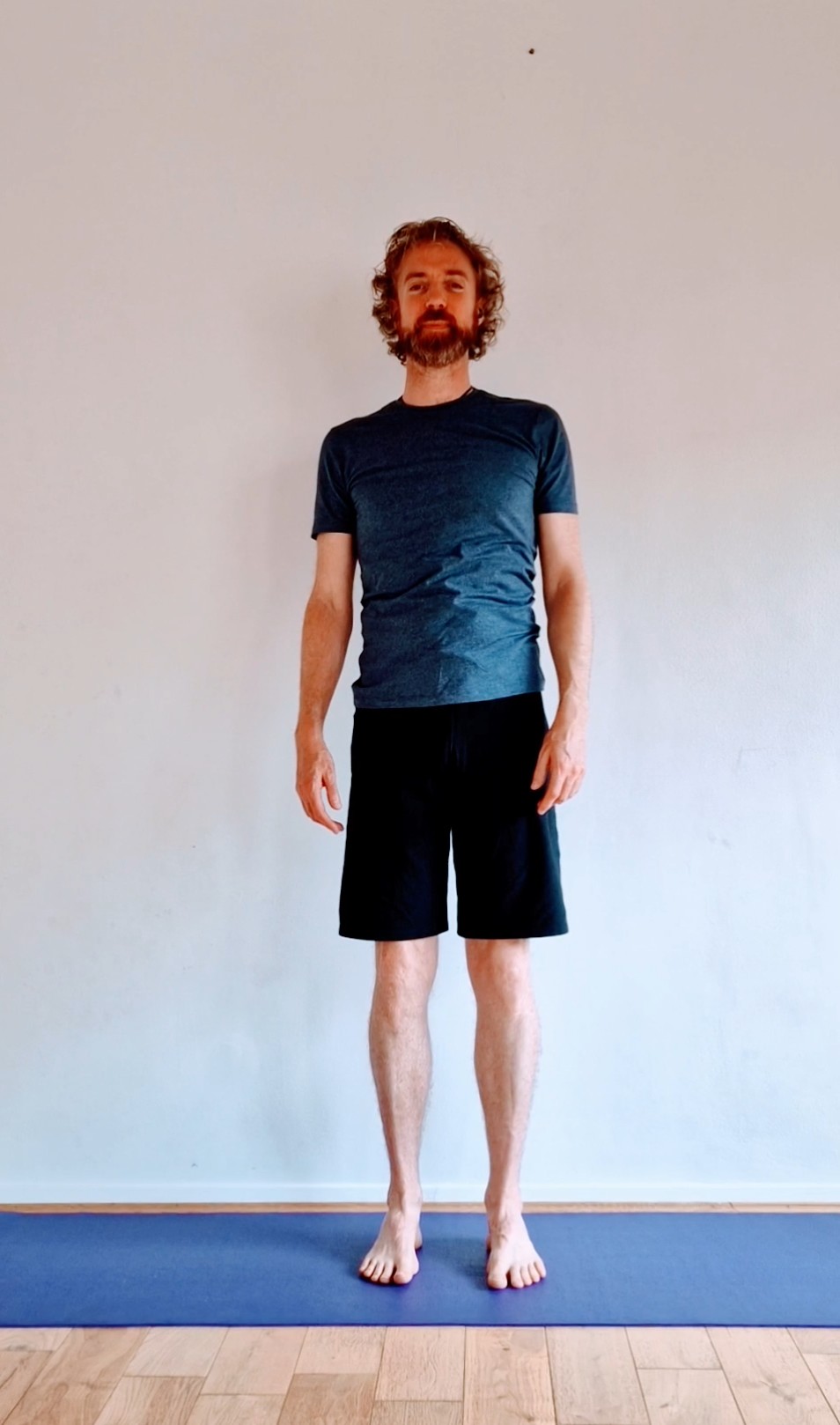
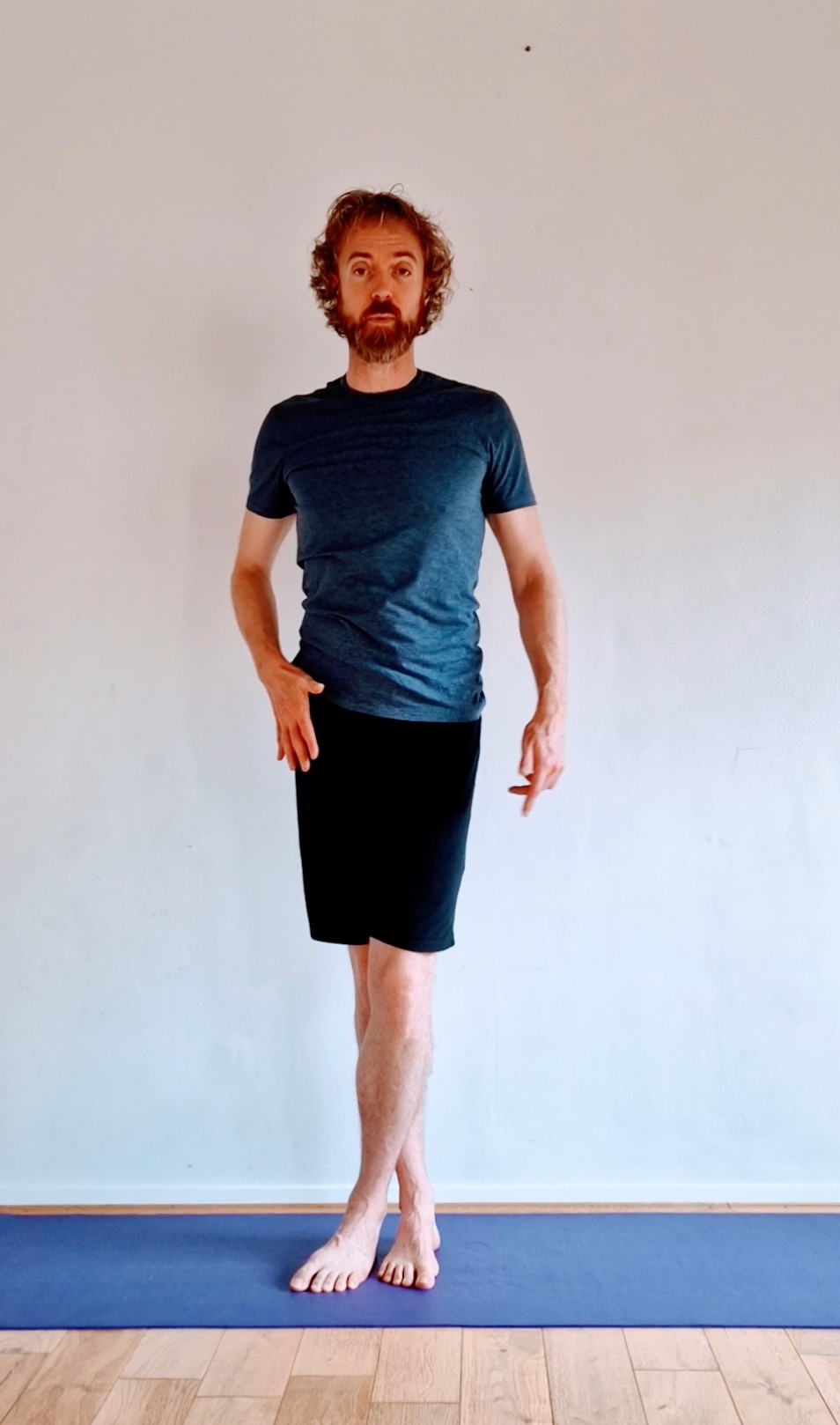
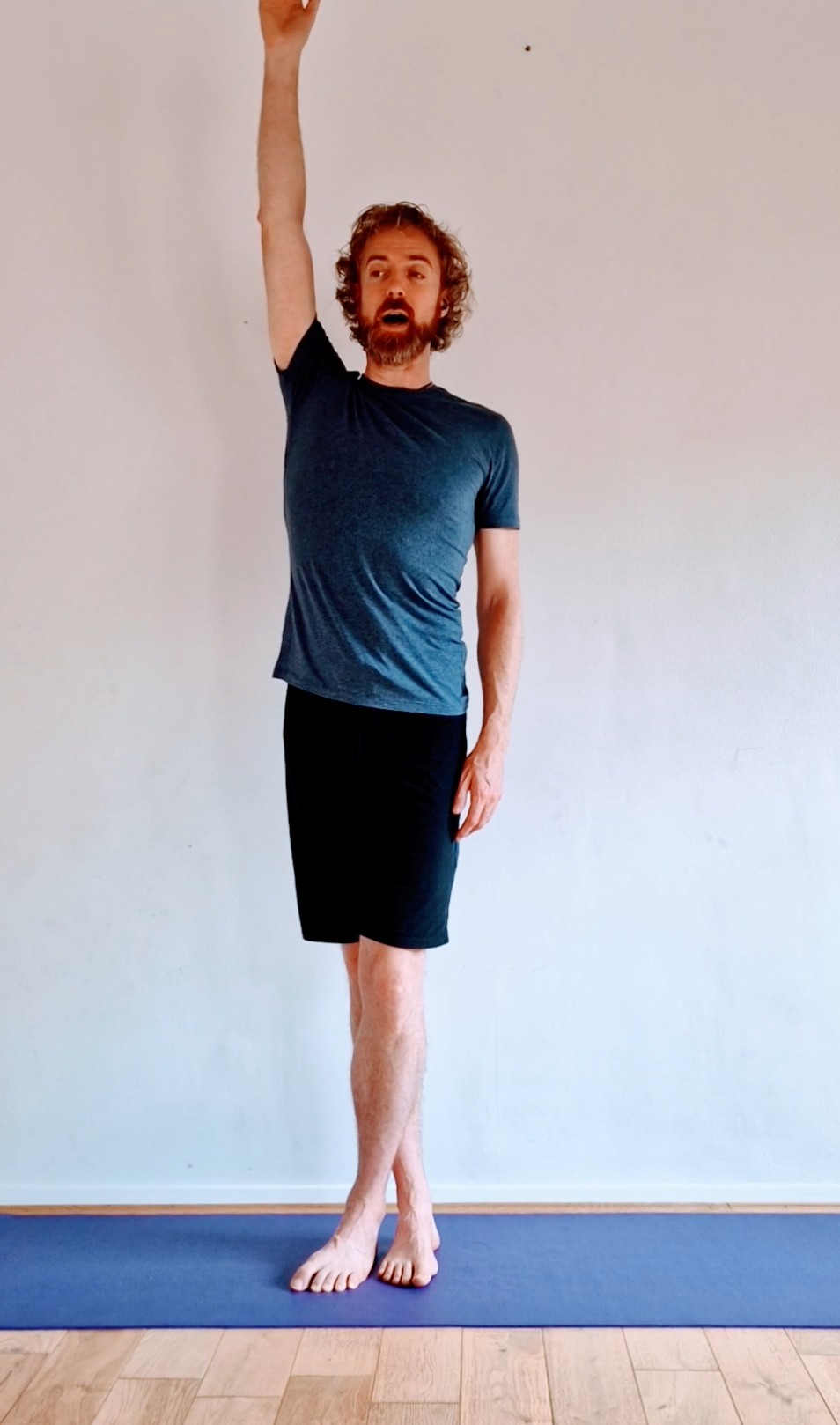
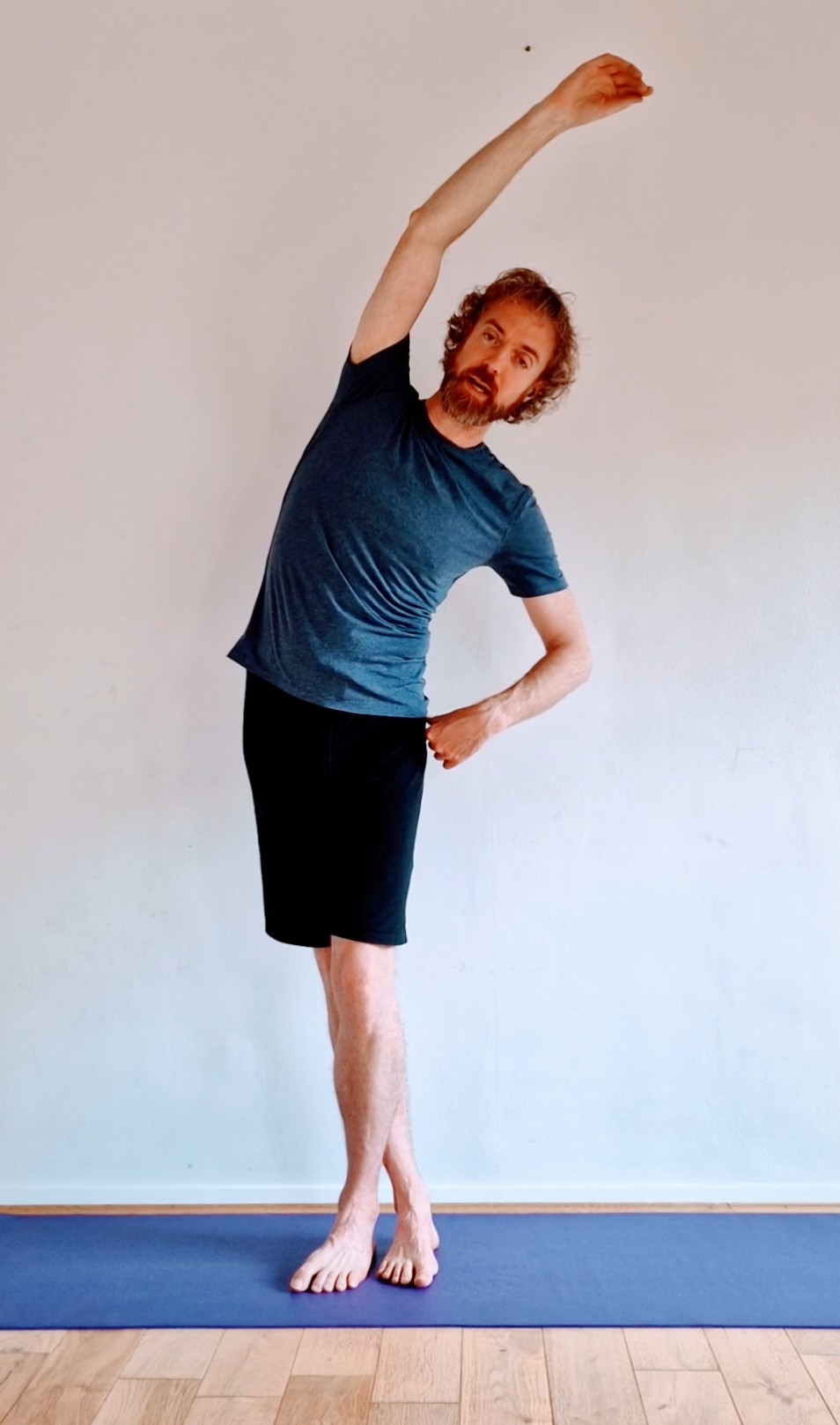
Steps – basic to the other side
- Stand with your feet next to each other.
- Settle into the feet as the movements can change your balance, which can be a bit unsettling.
- Cross your Right leg in front of your left so the foot is on the outside. This helps to stabilise the left side of the pelvis.
- Lift your left arm up (the same arm as the trapped leg). This is helping to lift the leftside of the ribcage up.
- Keeping the sense of lift in the ribs, bend sideways to the right.
- You’re trying to keep flat and in the same plane as your pelvis, so I sometimes imagine that I’m sliding between two panes of glass.
- Hold for thirty seconds, and then come back to standing upright.

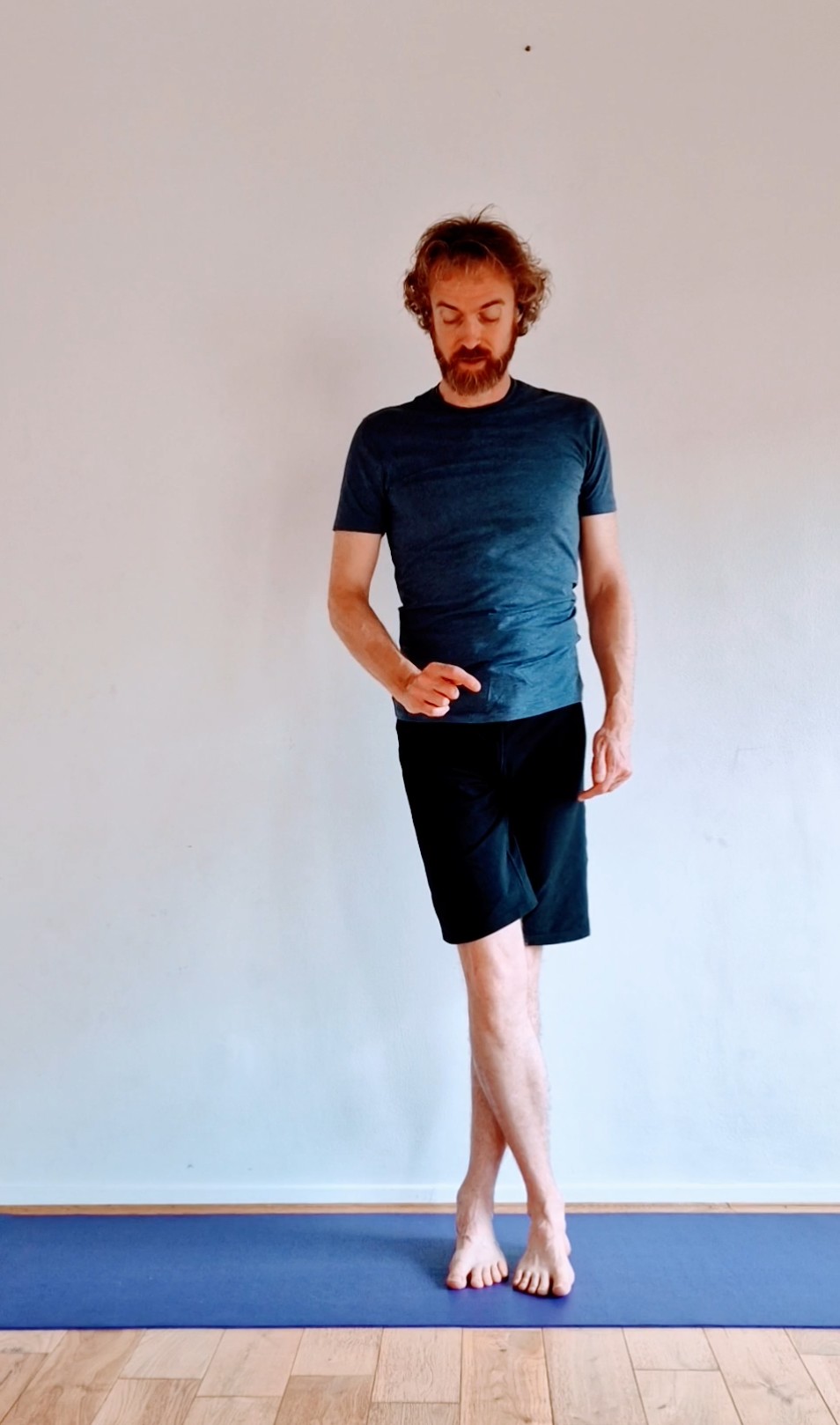
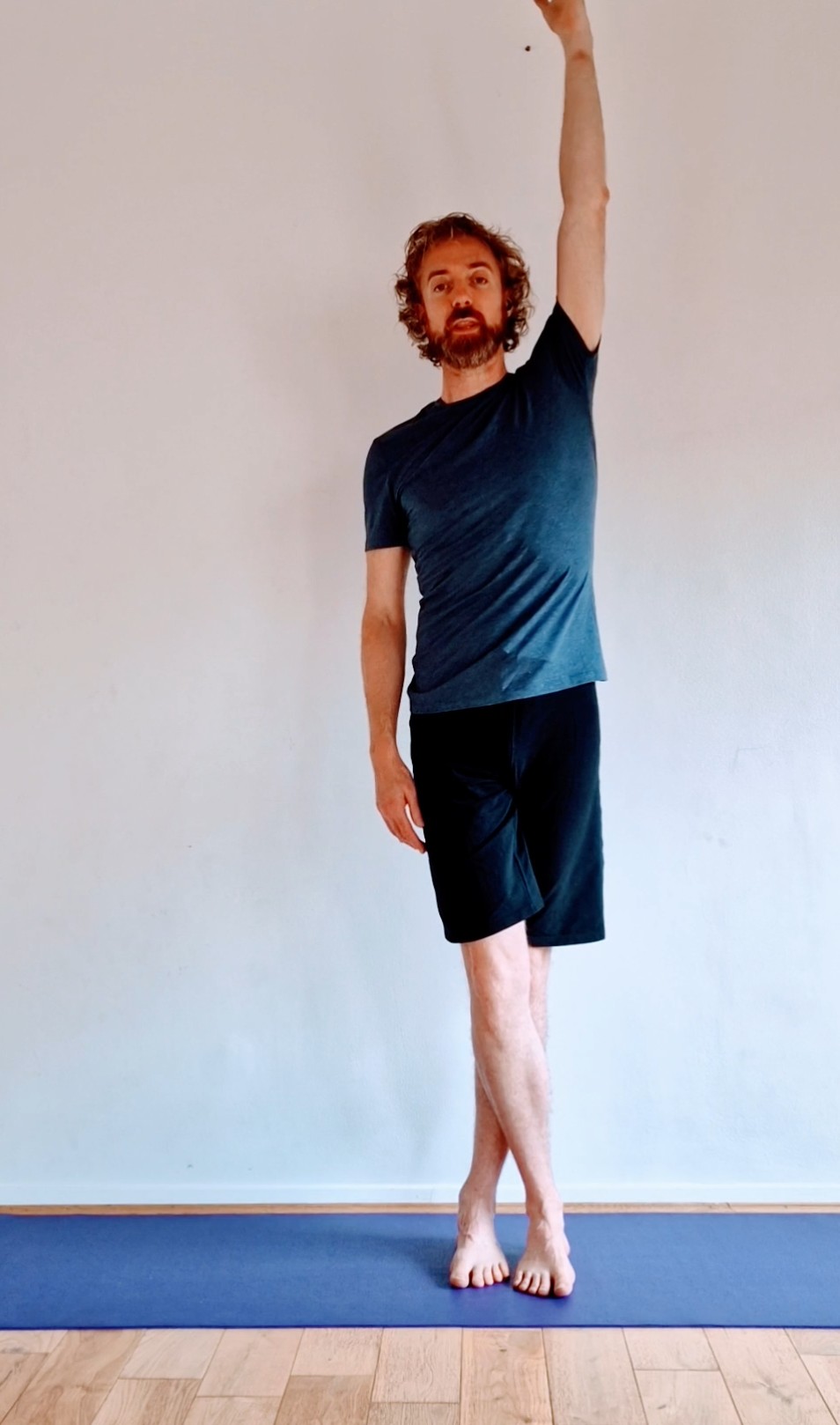
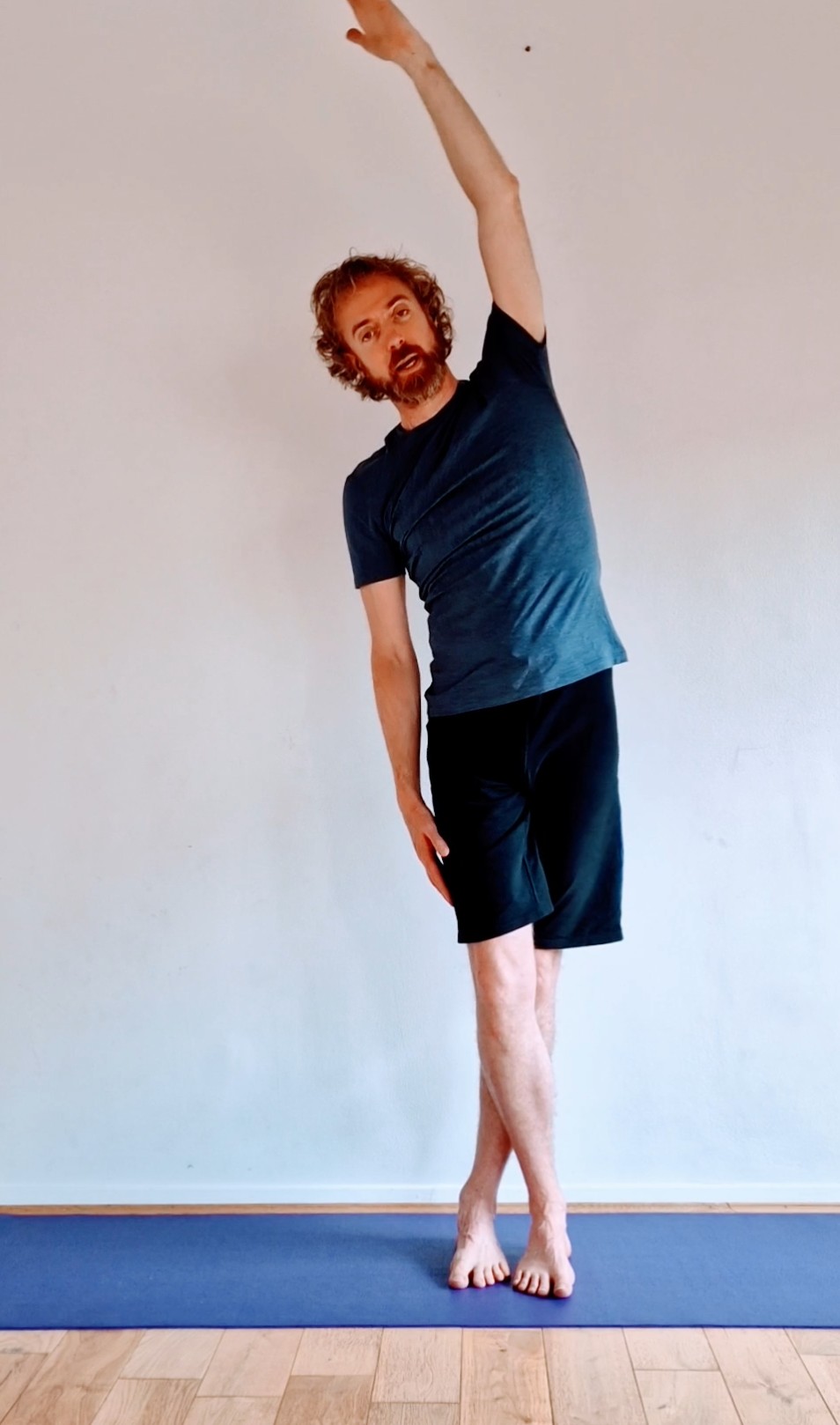
Considerations
Leaning to the same side as the front leg
If you leant towards the front leg, rather than the “trapped” leg, there is a tendency to twist the pelvis forward. This is especially true if your waist and hips are tight as you will be finding the easiest way to do the movement. It’s not wrong, but try going the other way to see how it feels. You could do both directions as a matter og course.
Your balance is very poor
If your balance is poor, then have a chair to the side of you. Have it on the side that you’re bending towards and rest the fingers of that hand on the back of the chair.
Steps – Deeper leg movement to the first side
- Stand with your feet next to each other.
- Settle into the feet as the movements can change your balance, which can be a bit unsettling.
- Cross your Left leg in front of your right. Take this further across than in the basic stretch.
- You want to put your weight into this leg and the knee is likely to bend so that you can have the little toes of the right foot resting on the ground.
- Lift your right arm up (the same arm as the trapped leg). This is helping to lift the right side of the ribcage up.
- Keeping the sense of lift in the ribs, bend sideways to the right.
- You’re trying to keep flat and in the same plane as your pelvis, so I sometimes imagine that I’m sliding between two panes of glass.
- Hold for thirty seconds, and then come back to standing upright.

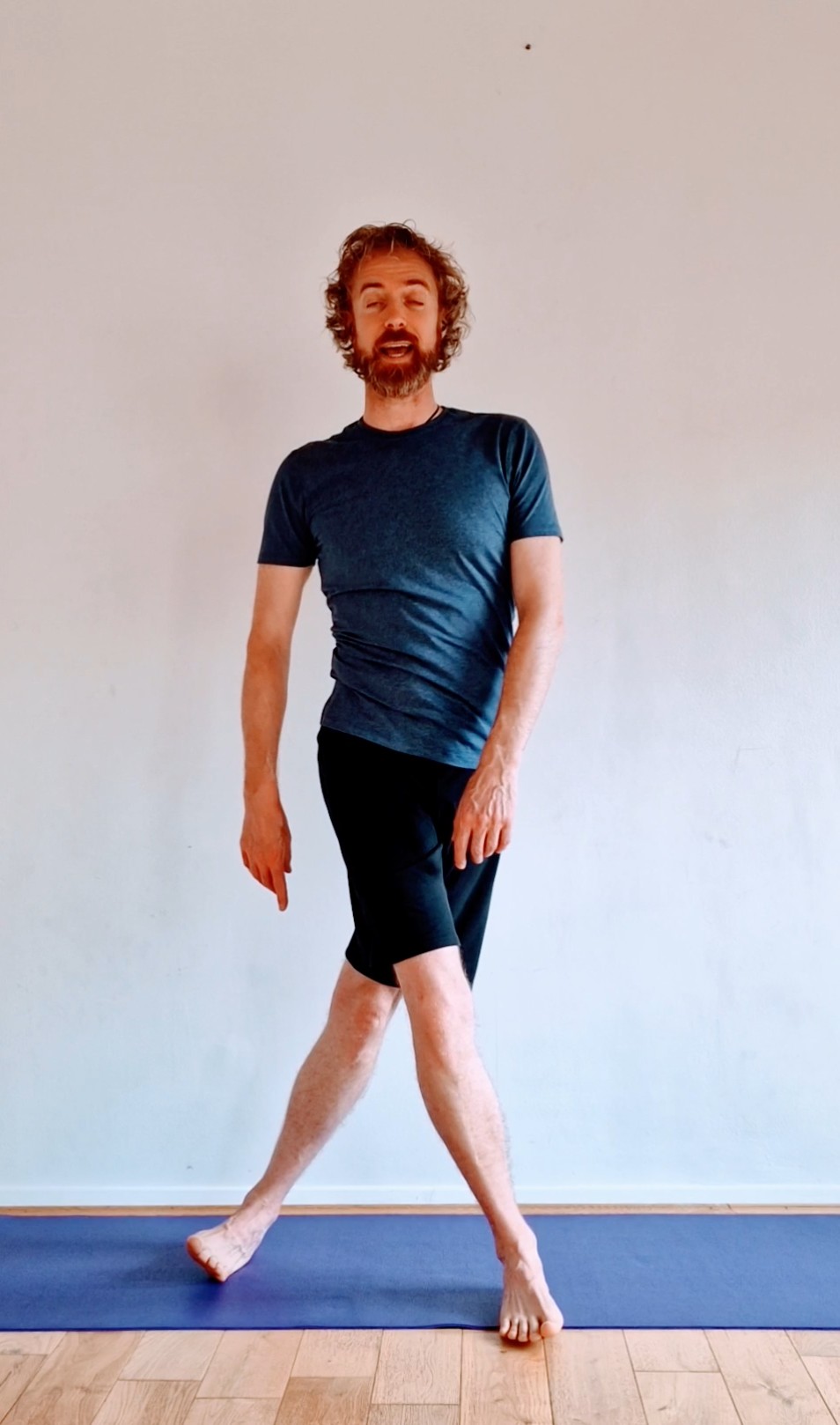
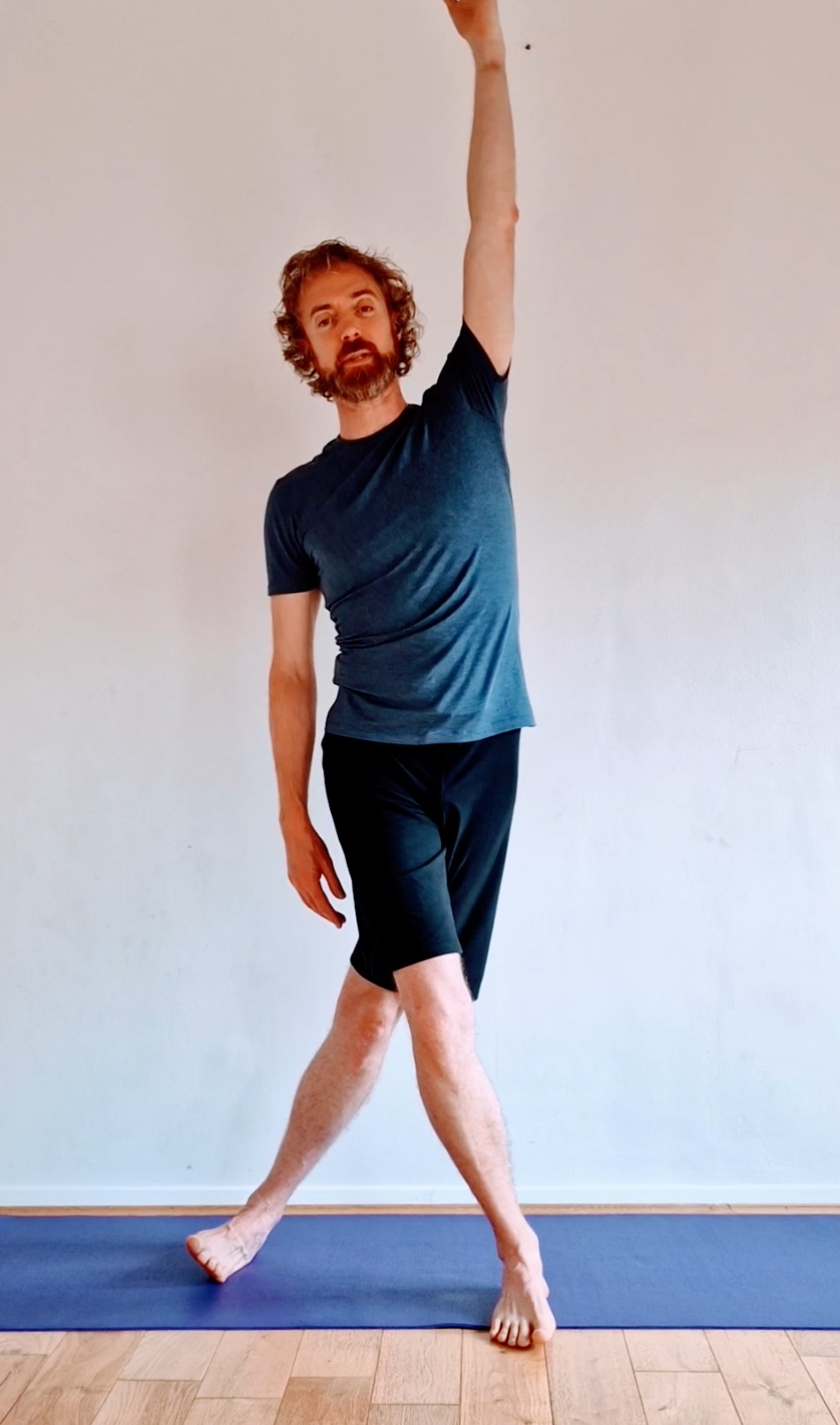
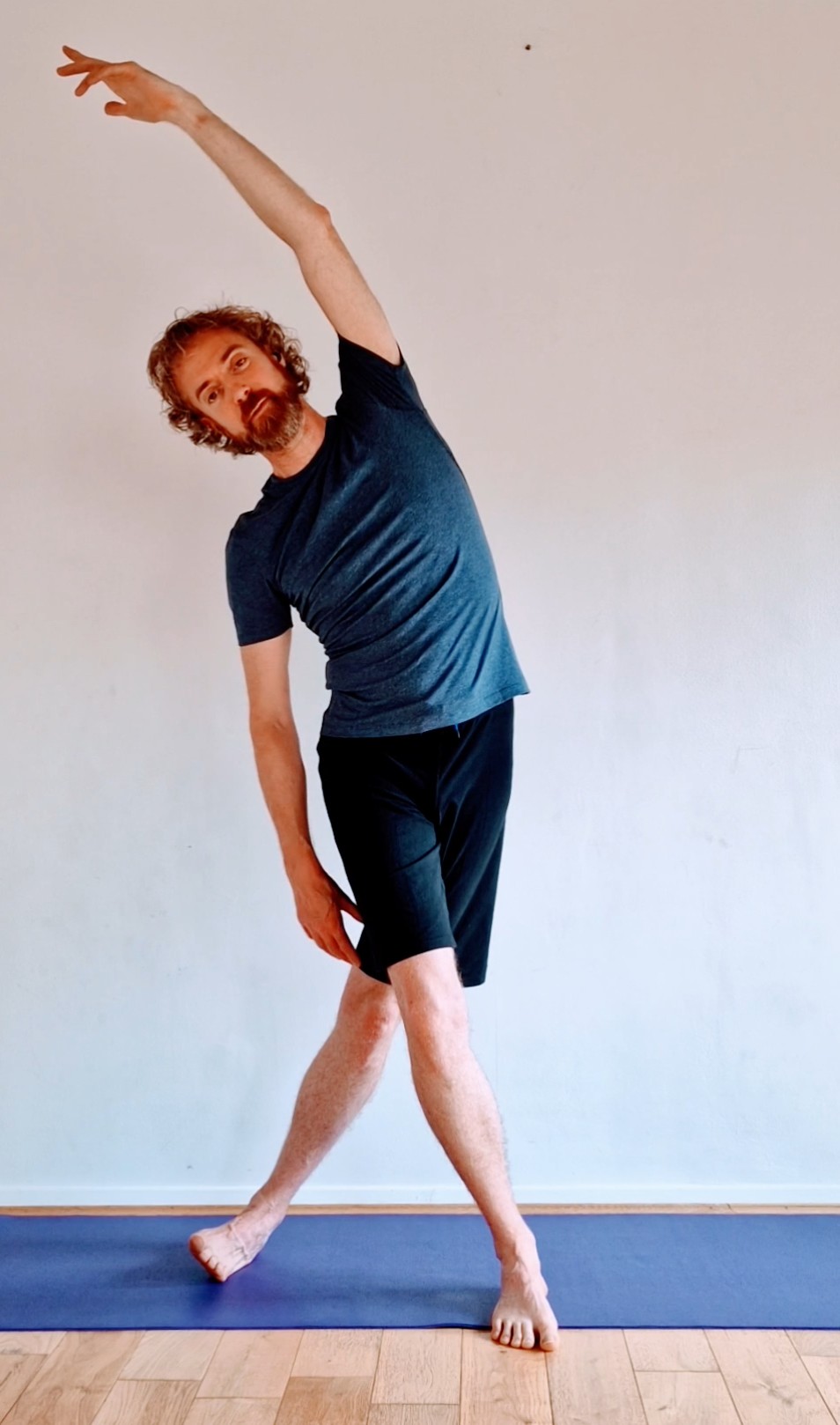
Steps – Deeper leg movement to the other side
- Stand with your feet next to each other.
- Settle into the feet as the movements can change your balance, which can be a bit unsettling.
- Cross your right leg in front of your right. Take this further across than in the basic stretch.
- You want to put your weight into this leg and the knee is likely to bend so that you can have the little toes of the left foot resting on the ground.
- Lift your left arm up (the same arm as the trapped leg). This is helping to lift the left side of the ribcage up.
- Keeping the sense of lift in the ribs, bend sideways to the right.
- You’re trying to keep flat and in the same plane as your pelvis, so I sometimes imagine that I’m sliding between two panes of glass.
- Hold for thirty seconds, and then come back to standing upright.

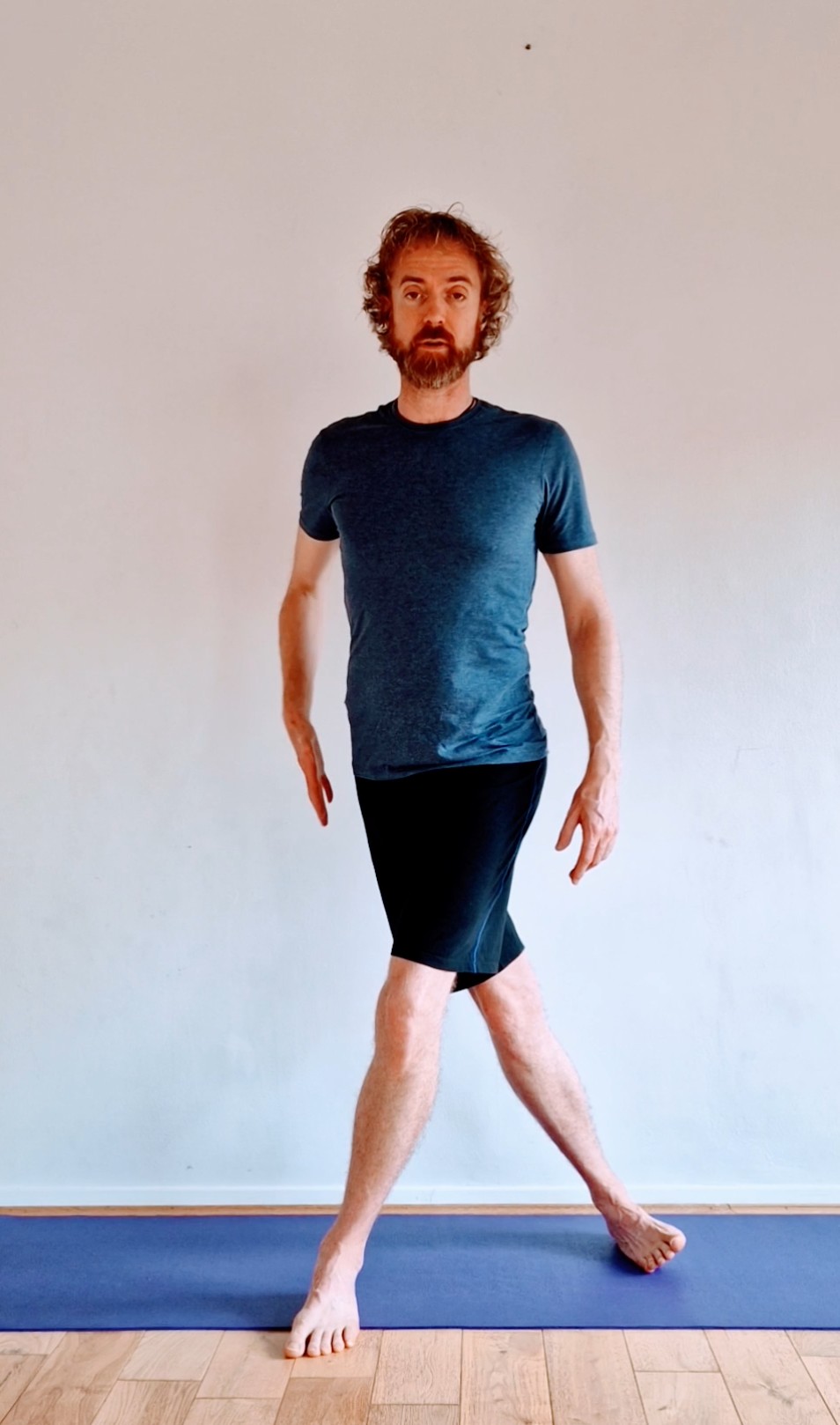
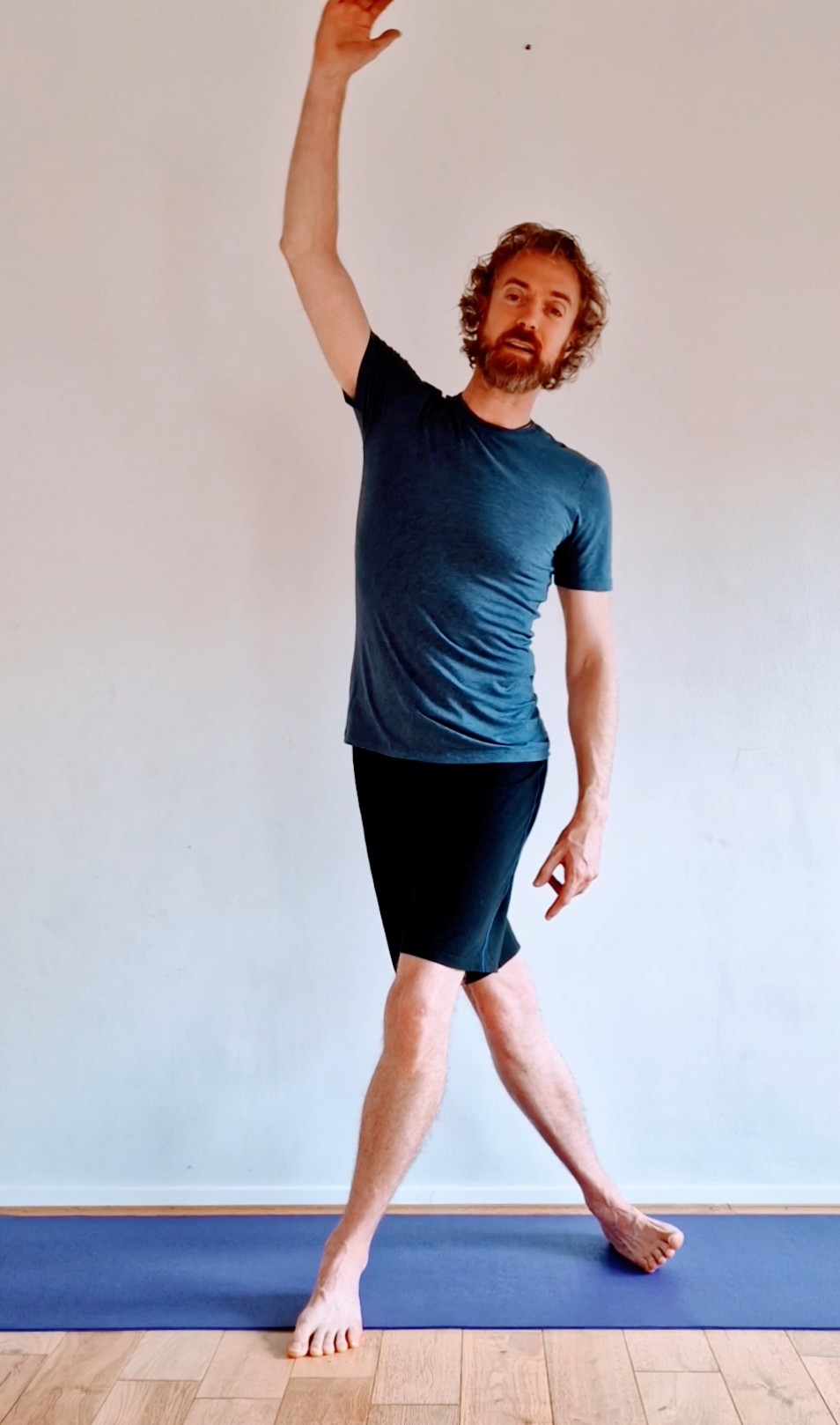
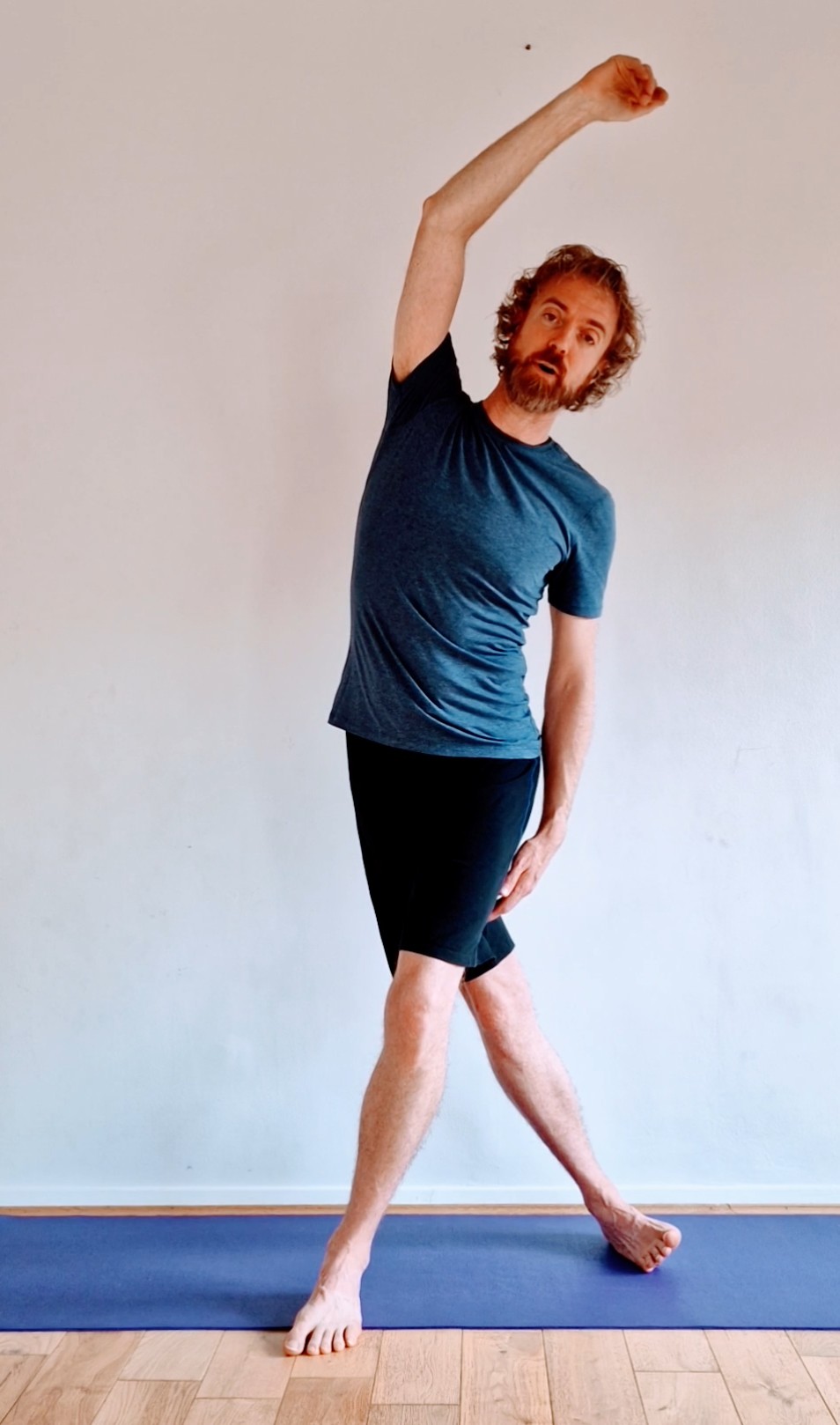
Video
Here’s a short video of me doing the movement.
Thanks for reading this my lovely Interonauts.
Tim


